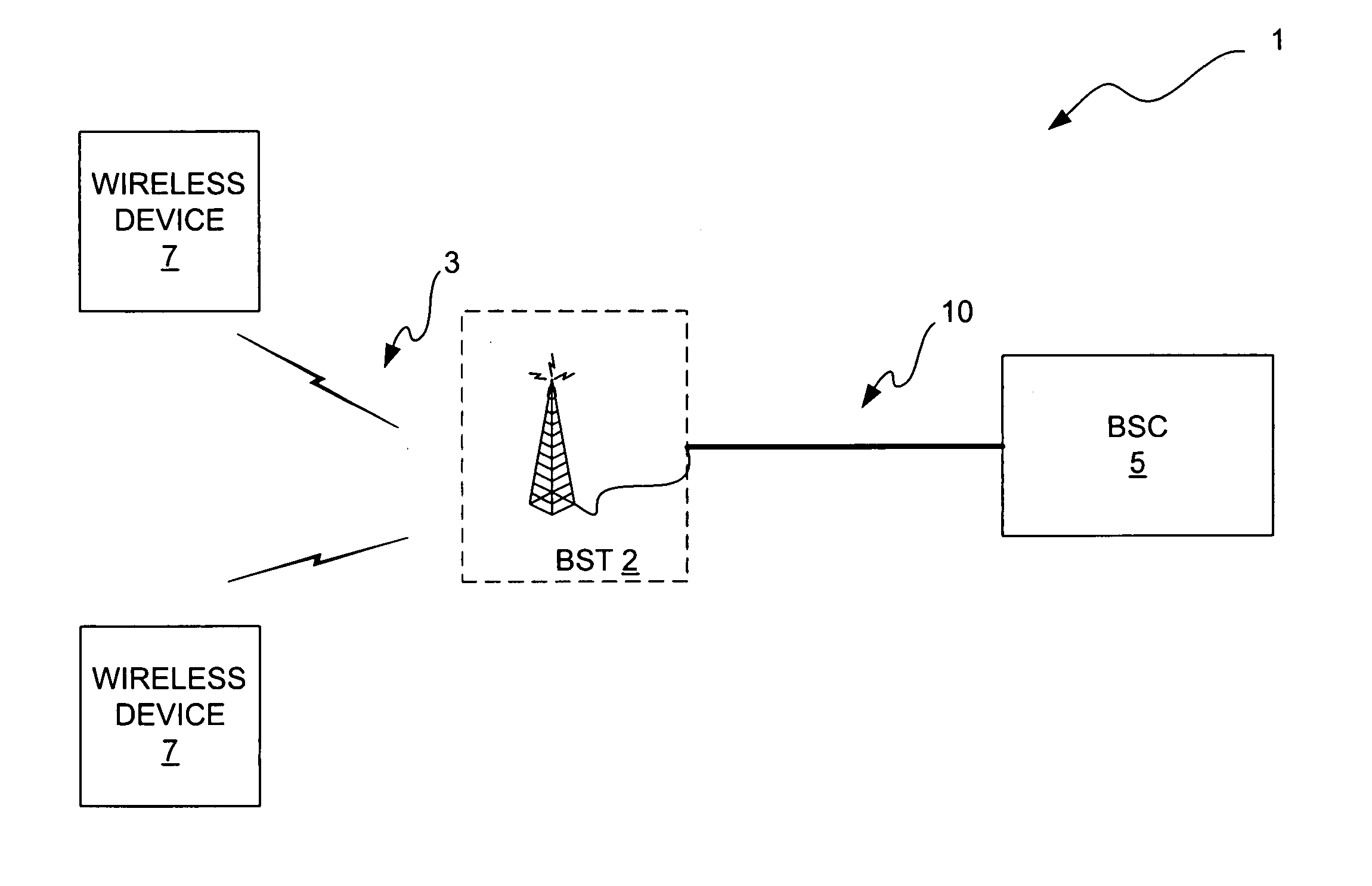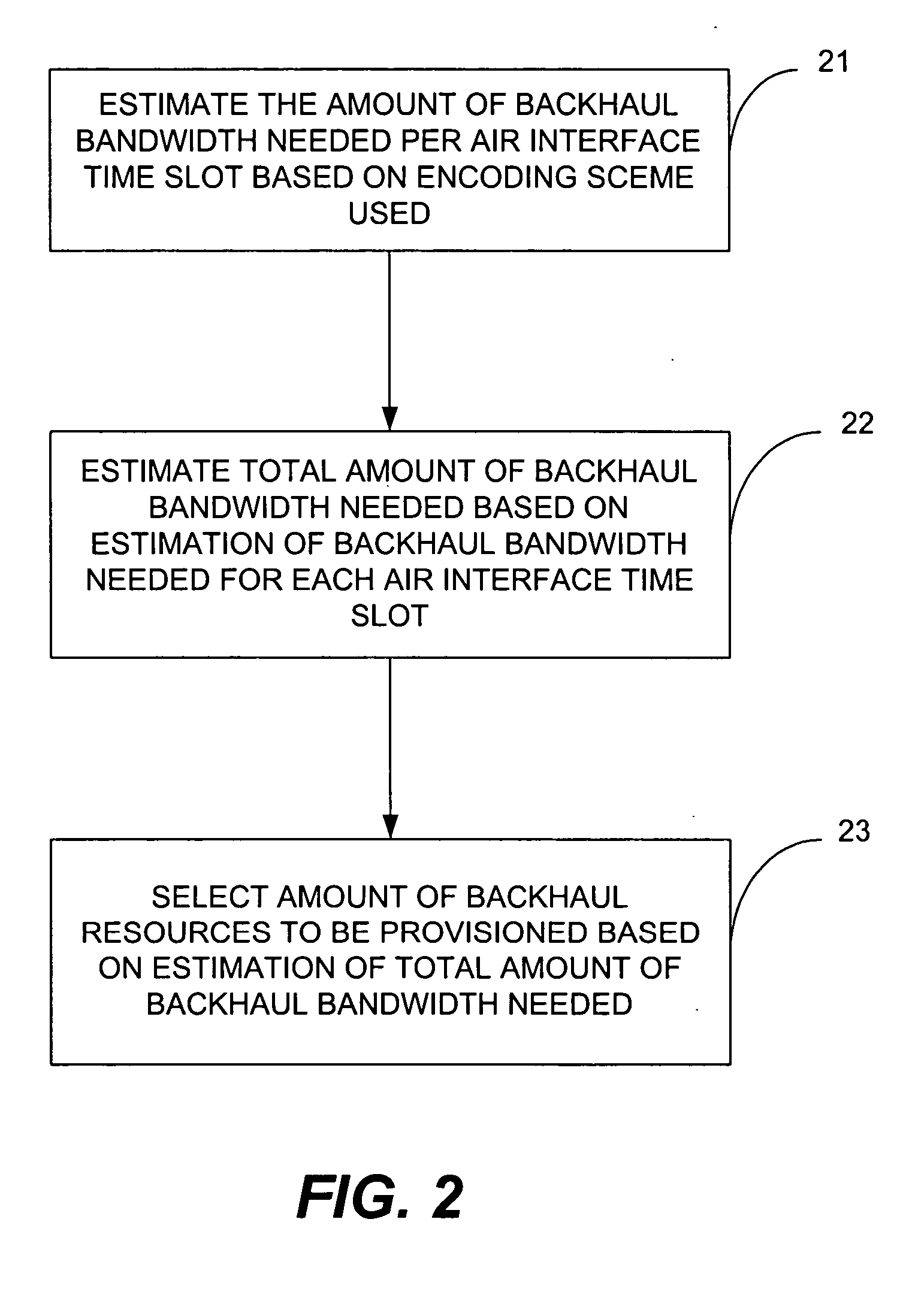Method and apparatus for use in provisioning resources for a backhaul link
a technology of backhaul link and resource provisioning, applied in the field of methods, can solve the problem of more resources (e.g., t1 lines) being provisioned for the abis link than, and achieve the effect of accurately determining the amount of bandwidth and amount of resources
- Summary
- Abstract
- Description
- Claims
- Application Information
AI Technical Summary
Benefits of technology
Problems solved by technology
Method used
Image
Examples
Embodiment Construction
[0016] The present invention will now be described with reference to an embodiment in which an Abis link between a base station transceiver (BST) and a base station controller (BSC) is being provisioned. As stated above, the present invention is not limited with respect to the type of network that the present invention is used to provision. For example, the present invention may also be used to determine the amount of resources that needs to be provisioned for a link between a Node B transceiver and an RNC in a UMTS network and for a link between an AP transceiver and a BSC of a WLAN. However, in the interest of brevity, the present invention will be described only with reference to its use in determining provisioning of an Abis link of a GPRS or EDGE wireless network.
[0017]FIG. 1 is a block diagram of a wireless network 1 having a backhaul link 10 and an air interface 3. A BST 2 is connected by the backhaul link 10 to a BSC 5. The BST 2 communicates over the air interface 3 with w...
PUM
 Login to View More
Login to View More Abstract
Description
Claims
Application Information
 Login to View More
Login to View More - R&D
- Intellectual Property
- Life Sciences
- Materials
- Tech Scout
- Unparalleled Data Quality
- Higher Quality Content
- 60% Fewer Hallucinations
Browse by: Latest US Patents, China's latest patents, Technical Efficacy Thesaurus, Application Domain, Technology Topic, Popular Technical Reports.
© 2025 PatSnap. All rights reserved.Legal|Privacy policy|Modern Slavery Act Transparency Statement|Sitemap|About US| Contact US: help@patsnap.com



